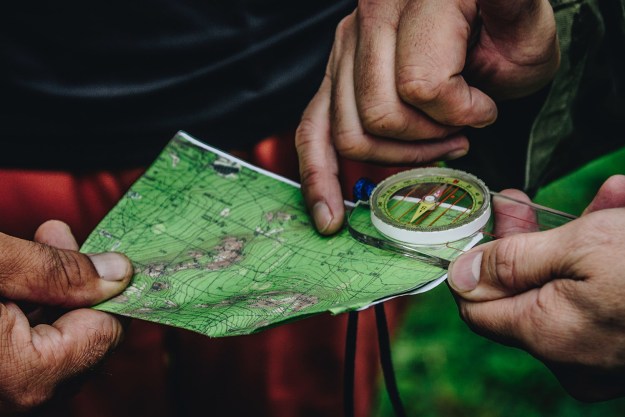
Dwayne “The Rock” Johnson has joined forces with athletic brand Under Armour in what could be one of the biggest tag-team collaborations in recent memory. And no, he’s not making a return to the ring (at least not at the moment). We’re talking a tried and true workout companion: The Rock earbuds.
Johnson took to Instagram on May 30 to announce the launch of his highly anticipated Project Rock True Wireless In-Ear headphones, which were made in partnership Under Armour and premium speaker producers JBL.
Crafted with a durable, sweat-proof material that will sit secure in your ear as you move, The Rock earbuds were designed specifically for the workout grind. And, seeing as they’ve been put through the Iron Paradise test by Mr. Johnson himself, you know these are the real deal.
The Project Rock True Wireless In-Ear Headphones are built to withstand any type of workout, too, whether you’re sweating up a storm in the gym pumping iron or running trails in the great outdoors. Under Armour lent a helping hand with its UA Storm technology with an IPXL7 rating, giving The Rock earbuds a lasting, water- and sweat-proof protection barrier to ensure your headphones can keep up with your training. The team even went one step further and added much-needed anti-microbial ear tips to help stave off bacterial growth. Thank you for the clean ears, Dwayne!
Offering winged ear-tip enhancers, these in-ear headphones are engineered to stay comfortably in place, no matter your motion. They are also built with UA Talk-Thru tech, which means you don’t have to take the headphones off to have a conversation. Instead, the headphones function by a simple touch of the Brahma bull on the side, which triggers the noise-canceling feature to allow you to speak and be heard.
And yes, there’s more. The Rock earbuds play host to up to five hours of battery life within a rugged, aluminum 20-hour charging case to make sure your music and motivation last until your workout is complete.
The earbuds are currently sold out (they went super quick), but you can sign up to be notified when they are back in stock.
Looking for stuff to listen to while you workout? Maybe that’s not death metal? Then check out our list of best podcasts to tune into while you work it out.
Editors' Recommendations
- Should you wait to drink alcohol after working out? Your questions answered
- A new study says only working out on the weekend is just fine (and here’s how to do it)
- Workout While You Work: Easy Desk Exercises to Try on the Job This 2022
- Product Review: These Sustainable Shorts Will Motivate You to Work Out






